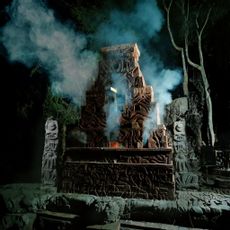other titles...
Senyawa
Vajranala
the state51 conspiracy
'Vajranala' sees the Indonesian experimental duo of vocalist Rully Shabara and multi-instrumentalist Wukir Suryadi explore how, over centuries, the natural world has shaped our society, the knowledge systems from which power derives, and why that still resonates today.
It’s an exercise in understanding the root of the power (knowledge) discussed in their 2021 release Alkisah. When it comes to ‘power’, says Senyawa vocalist Rully Shabara, “people will normally think of someone political, but I don’t think that’s the case. The origin of power goes deeper than that.” It’s the shamans, he says, who were the first possessors of power: “If you’re in a village, if you’re considered to have the knowledge to connect people with the realm of the gods, then you will have power before the leader. It’s very fundamental to explore this.”
Further to this, 'Vajranala' is a collection of multidisciplinary works that reinterpret the mythology of the land where the Brojonalan Temple (Pawon Temple - more info below) stands. The work is also accompanied by an installation in the form of a stone relief that is placed on the ground where it was created, serving as an artefact for the future. The first half of the album should technically be viewed as a single song split into three acts, each representing one strand. The first, for example, refers to Pawon’s connection with the star system. There is a theory that Pawon was constructed to align with Orion’s Belt, or ‘lintang waluku’ in Javanese. The appearance of lintang waluku, Shabara explains, would traditionally signify the beginning of the planting season, which Senyawa references in the third song ‘Kaca Benggala’. To reflect this, multi instrumentalist Wukir Suryadi took a ‘luku’ (traditional Indonesian plough) and transformed it into a giant and careening bowed instrument; for recording, they made a more compact recreation.














